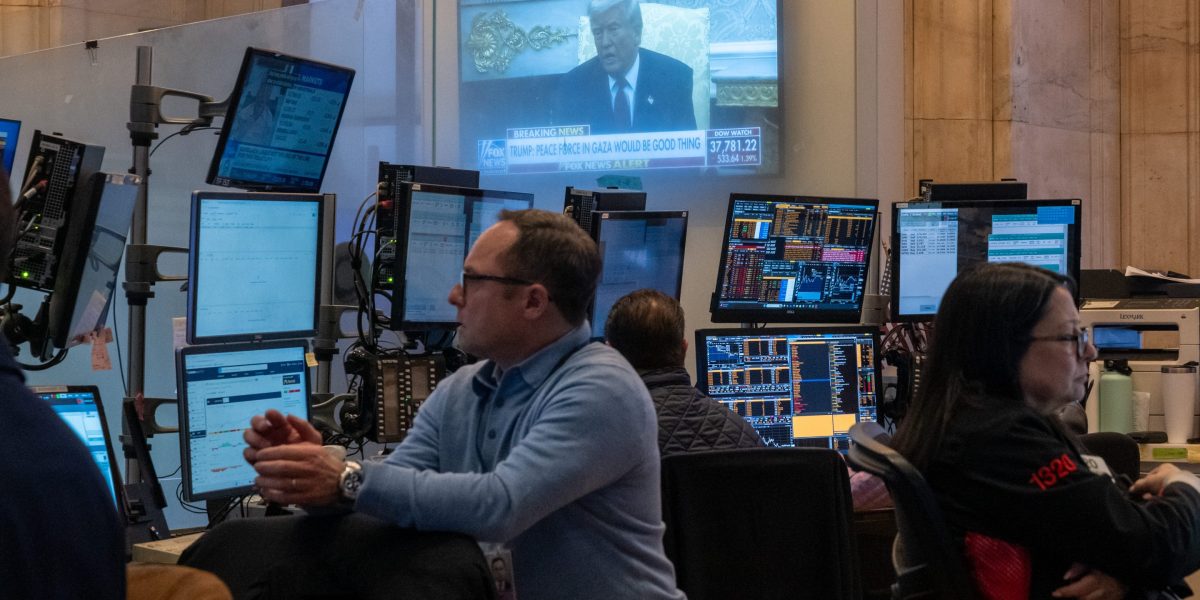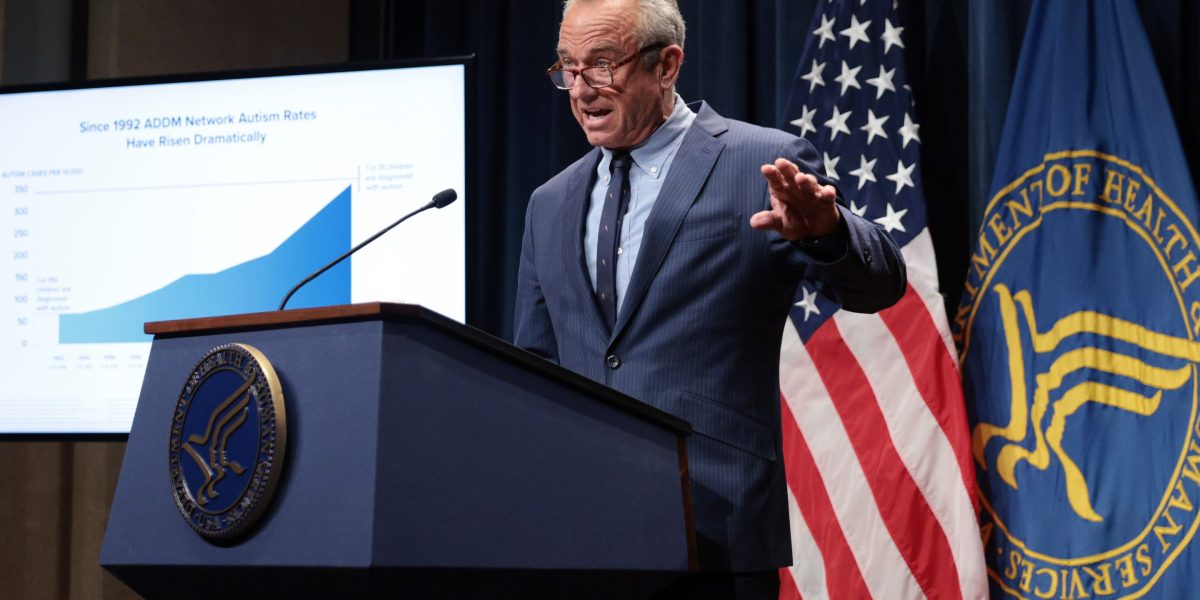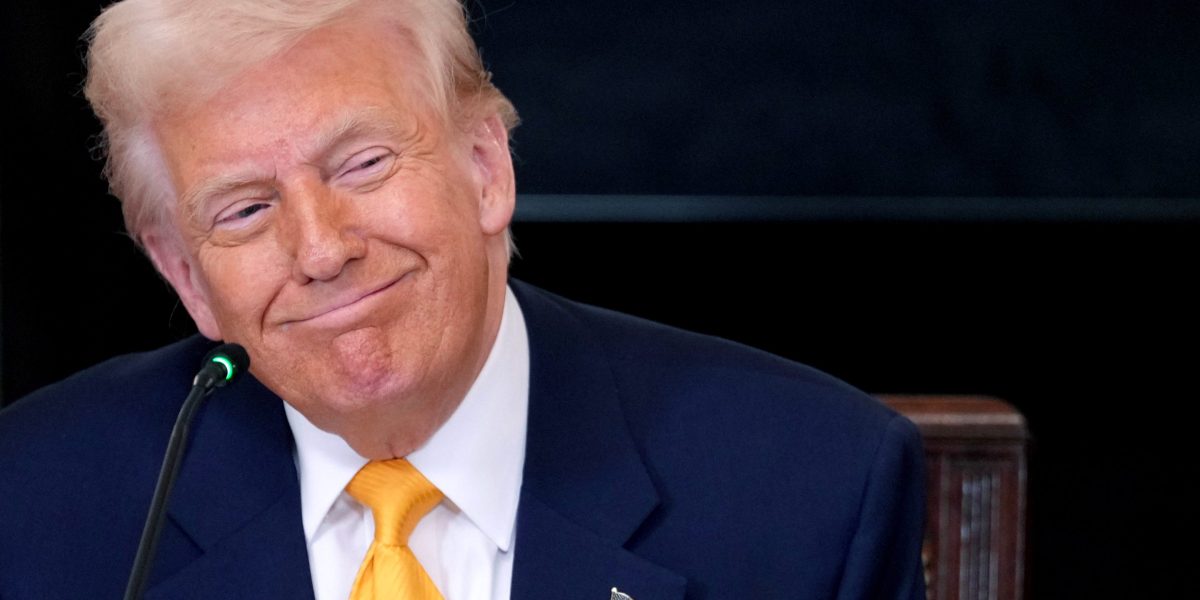- President Donald Trump’s announcement of sweeping “reciprocal tariffs” caught investors completely off-guard last week, but news of negotiations and an erroneous report about a 90-day pause might have given traders some hope. Meanwhile, hedge funds may have supported share prices as they covered their short positions.
Markets are gyrating like it’s 2020 all over again as investors continue to reckon with President Donald Trump’s sweeping “reciprocal tariffs,” resulting in Wall Street’s most volatile session since the onset of the COVID-19 pandemic.
Stocks initially fell further Monday before some Big Tech names led a measured recovery. The S&P 500 plunged into bear market territory to start the day, dropping 20% from the index’s mid-February high, before erasing most of those losses to close down 0.23% for the session. The tech-heavy Nasdaq Composite followed a similar pattern, finishing with a 0.1% gain, while the Dow Jones fell about 350 points after ending last week with back-to-back losses of 1,500 points or more for the first time in its history.
Markets simply weren’t prepared for the protectionist measures Trump unveiled in the White House Rose Garden on Wednesday, said Jay Hatfield, the CEO of Infrastructure Capital Advisors. A blanket 10% tariff went into effect on Saturday, but most imports are set to be taxed much higher if those goods come from countries that have trade deficits with the U.S.
“What we call the ‘chart of death’ was completely unexpected,” said Hatfield, who manages ETFs and a series of hedge funds.
However, Hatfield noted stocks didn’t do a straight nosedive Monday as administration officials claimed more than 50 countries have called the White House to negotiate, even if reports of a 90-day tariff pause proved to be erroneous. When the S&P moved below 5,000, just over a month after surging above the 6,100 mark, it triggered a natural support level for the index, he said.
“We’re starting to find a bottom,” Hatfield said. “But that doesn’t mean the bottom is not 4,800 or 4,600.”
Ironically, share prices might have also gotten a boost because uncertainty remains high. The CBOE Volatility Index, or VIX, briefly moved above 50 several times throughout the session. Popularly known as Wall Street’s “fear gauge,” the index is derived from the prices of S&P 500 options and is experiencing its highest sustained spike since the pandemic.
Hatfield said this heightened volatility signals hedge funds have, fittingly, ensured they are well hedged by buying puts, or options contracts that give investors the right to sell an underlying asset—in this case, the S&P 500 futures contracts—at a predetermined price.
Exercising those options is profitable when the value of the index drops below the option’s “strike price.” When volatility is high, however, traders have incentive to unwind these positions to ensure they make money before stocks possibly rebound.
“It’s actually one good thing about hedge funds,” Hatfield said. “They are the ones doing the buying that causes the market to stabilize.”
For example, Hatfield’s small hedge fund loaded up on S&P 500 puts Friday morning before liquidating them on Monday, which he could do because his long exposure to the index was limited.
“If you never cover your shorts,” he said, “you never make money.”
Chip stocks rally, but Apple and Nike fall
Tariff uncertainty created several winners and losers Monday. Popular chip stocks rallied, with shares of bull market darlings Nvidia and Broadcom jumping 3.5% and 5.4%, respectively. Amazon and Meta also helped lead the way for America’s tech giants, with both stocks climbing more than 2%.
But Dollar Tree outpaced all those companies as one of the day’s biggest winners. About half of the discount chain’s products will be subject to tariffs, analysts from Citi said, but the stock rose 8% as they suggested the company could raise prices without much pushback from consumers.
For other major names, however, Monday offered little respite. Apple shares have shed nearly a fifth of their value since Wednesday, with the stock declining 3.7% for the session. The iPhone maker relies heavily on China, which has been hit by a 54% tariff that Trump said will see another 50% duty tacked on if Beijing does not withdraw its own retaliatory measures.
It’s a similar story for Nike, which produces most of its apparel in India and other countries in Southeast Asia, which were also hit with heavy tariffs. Shares of Stellantis, Ford, and other automakers also continued to decline as the industry wrestled with a 25% tariff on all foreign cars and parts.
Investors did not necessarily flock to all types of safe haven assets, however. Treasuries sold off as the 10-year yield moved up over 20 basis points to 4.20%, and the price of gold also fell.
This story was originally featured on Fortune.com
Source link

 Entertainment8 years ago
Entertainment8 years ago
 Politics8 years ago
Politics8 years ago
 Entertainment8 years ago
Entertainment8 years ago
 Entertainment8 years ago
Entertainment8 years ago
 Tech8 years ago
Tech8 years ago
 Tech8 years ago
Tech8 years ago
 Tech8 years ago
Tech8 years ago
 Tech8 years ago
Tech8 years ago







